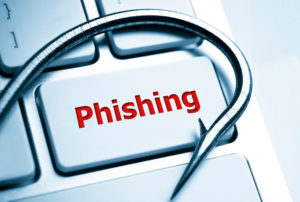9 red flags to help you Identify a phishing email
Would you know if you were the subject of a phishing email attack? Many people claim that they’d be able to tell right away if they received an email from an illegitimate source. If that were the case, there wouldn’t be 1.5 million new phishing sites every month, a 65% increase in attacks in the last year, and hackers would have moved on to their next idea for swindling people out of their identities and money. How do you spot a phishing attack and avoid falling victim yourself?
Look for these red flags:
- Sender Name: This one is also difficult to track, but a phishing email will typically close with a very generic name to avoid raising suspicion. You should recognize the people that send you emails, or at the very least, clearly understand their role at the organization.
- Sender Email Address: Always check to make sure that the email address is legitimate. Amateur hackers will send things from Gmail or Hotmail accounts and hope you don’t notice. More sophisticated hackers will closely mimic an actual email domain, like amazonprime.com rather than amazon.com. Double check the email address before responding, clicking, or opening, even if the from name appears correct.
- Discrepancies in Writing Format: If the attack is coming from overseas, you’re likely to notice some small issues in writing format, like writing a date as 4th April, 2018 rather than April 4, 2018. While this is subtle, it should be a red flag.
- Grammar Issues: We all fall victim to the occasional typo, but if you receive an email riddled with grammar and spelling mistakes, consider the source. It’s likely a hacker, especially if the email supposedly comes from a major organization.

- Attachments: Are you expecting and attachment from this sender? Rule of thumb, don’t open any attachment you don’t expect to receive, whether it’s a Zip file, PDF or otherwise. The breach for a ransomware attack often hides inside.
- Link Destination: Before you click on any link in an email, hover over it. The destination URL should pop up. Check out the domain name of this URL. Similar to the sender email address, make sure that this address is legitimate before clicking.
- Email Design: A non-typical font like Comic Sans should immediately raise red flags if you don’t clearly recognize the sender.
- Links to Verify Information: Never, ever click on a link to verify information. Instead, if you think the information does need updating, go directly to the website. Type in your email and password, and update your information from the Account tab. Always go directly to the source to offset a phishing email chance.
- Odd Logo Use: Hackers try their best to mimic the site’s look and feel. Oftentimes, they get very close; but they won’t be perfect. If something feels off, it probably is.
There is no fool-proof method to avaid falling victim to a phishing attack. However, knowing how to spot likely culprits is one step in the right direction.
Our clients in the central Kentucky area trust Intelligent IT for all their managed IT services. Offering everything from network support to desktop solutions, we will monitor your system for ongoing threats and protect your valuable information. Contact us on our website for more details about our services, or call us at (859) 523-9723 to speak with one of our knowledgeable staff today.




